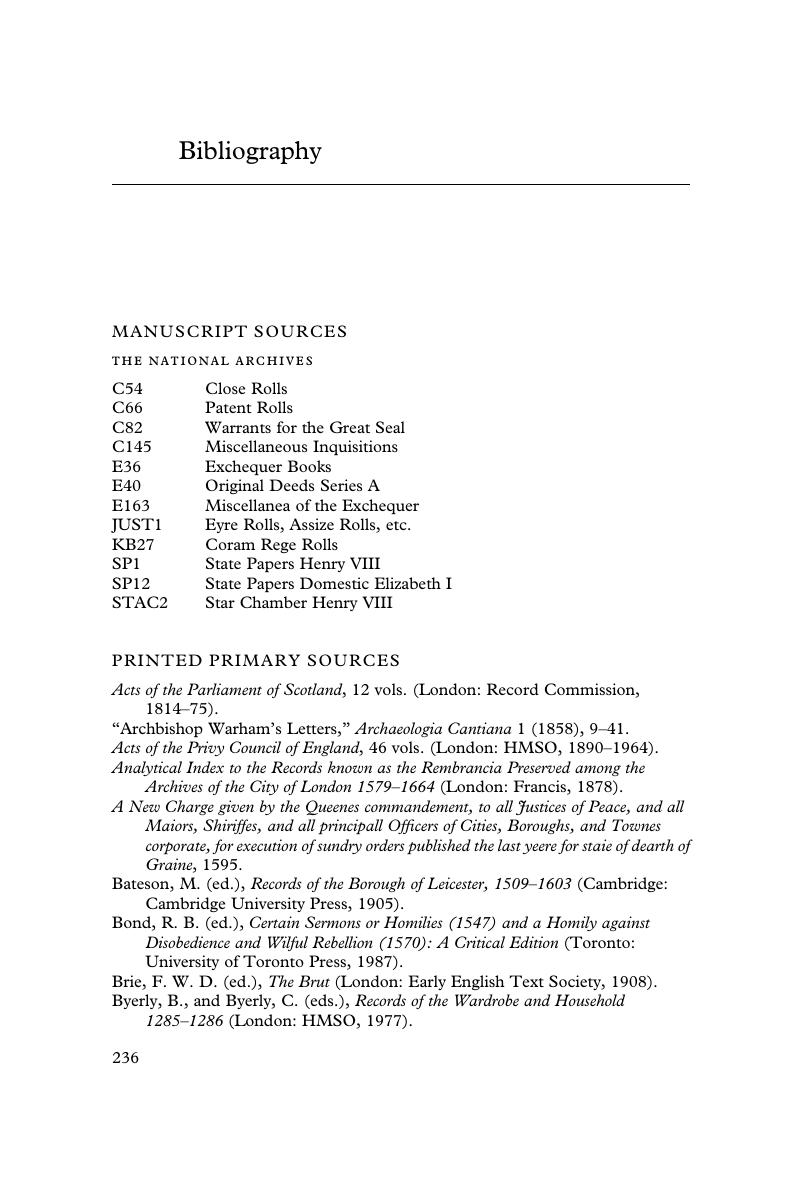 Famine and Scarcity in Late Medieval and Early Modern England
Famine and Scarcity in Late Medieval and Early Modern England Book contents
- Famine and Scarcity in Late Medieval and Early Modern England
- Famine and Scarcity in Late Medieval and Early Modern England
- Copyright page
- Dedication
- Contents
- Book part
- Glossary
- Introduction
- 1 Early market regulation to 1327
- 2 The response of Edward II and his government to the great famine
- 3 The food riots of 1347
- 4 Royal paternalism and the response to dearth 1349–1376
- 5 Scarcity and food riots 1377–1439
- 6 Harvest failure and scarcity in the reign of Henry VIII
- 7 The official language of Commonwealth and the popular response to scarcity in the reign of Henry VIII
- 8 The moral economy, 1547–1631 and beyond
- Bibliography
- Index
- References
Bibliography
Published online by Cambridge University Press: 05 September 2016
- Famine and Scarcity in Late Medieval and Early Modern England
- Famine and Scarcity in Late Medieval and Early Modern England
- Copyright page
- Dedication
- Contents
- Book part
- Glossary
- Introduction
- 1 Early market regulation to 1327
- 2 The response of Edward II and his government to the great famine
- 3 The food riots of 1347
- 4 Royal paternalism and the response to dearth 1349–1376
- 5 Scarcity and food riots 1377–1439
- 6 Harvest failure and scarcity in the reign of Henry VIII
- 7 The official language of Commonwealth and the popular response to scarcity in the reign of Henry VIII
- 8 The moral economy, 1547–1631 and beyond
- Bibliography
- Index
- References
Summary

- Type
- Chapter
- Information
- Famine and Scarcity in Late Medieval and Early Modern EnglandThe Regulation of Grain Marketing, 1256–1631, pp. 236 - 254Publisher: Cambridge University PressPrint publication year: 2016


